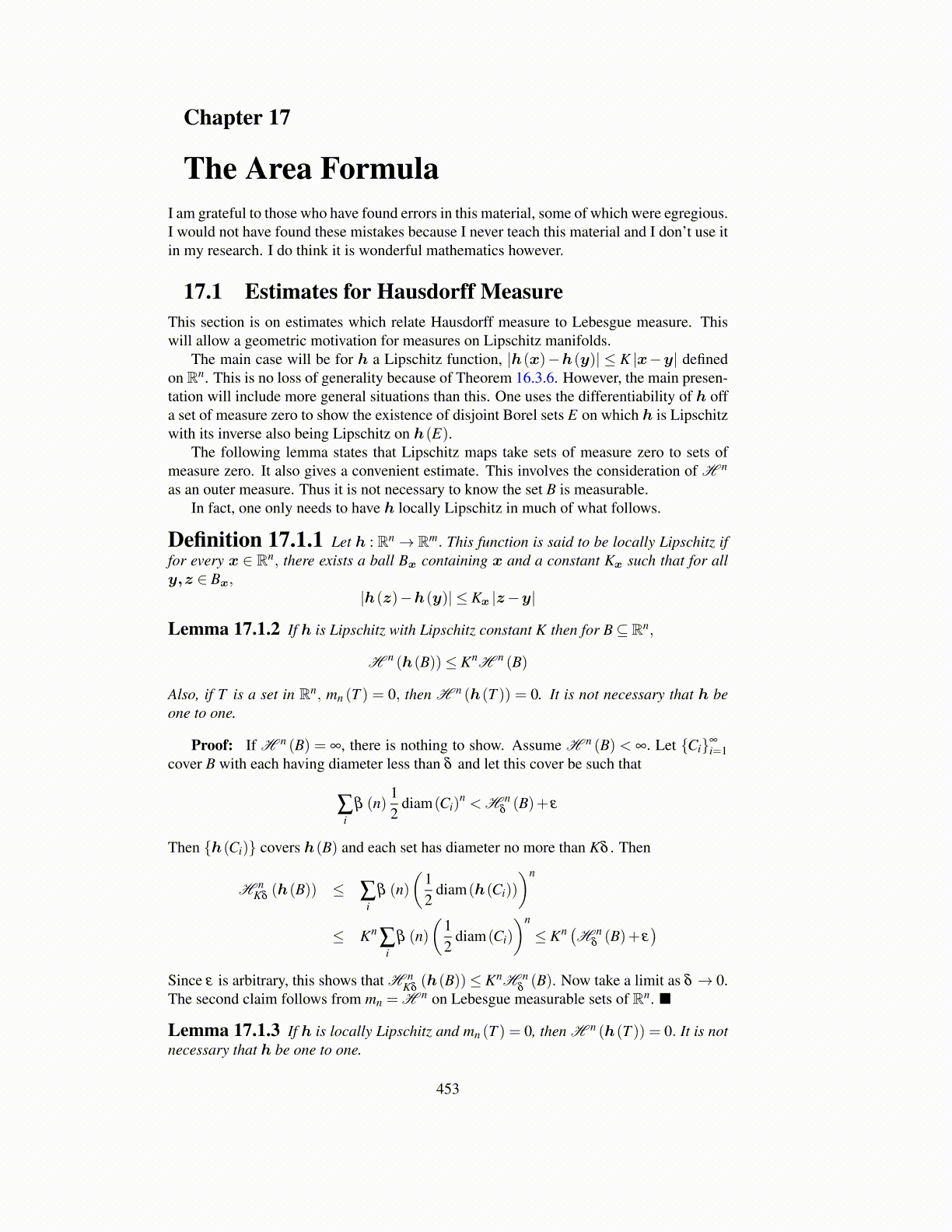
Chapter 17
The Area FormulaI am grateful to those who have found errors in this material, some of which were egregious.I would not have found these mistakes because I never teach this material and I don’t use itin my research. I do think it is wonderful mathematics however.
17.1 Estimates for Hausdorff MeasureThis section is on estimates which relate Hausdorff measure to Lebesgue measure. Thiswill allow a geometric motivation for measures on Lipschitz manifolds.
The main case will be for h a Lipschitz function, |h(x)−h(y)| ≤ K |x−y| definedon Rn. This is no loss of generality because of Theorem 16.3.6. However, the main presen-tation will include more general situations than this. One uses the differentiability of h offa set of measure zero to show the existence of disjoint Borel sets E on which h is Lipschitzwith its inverse also being Lipschitz on h(E).
The following lemma states that Lipschitz maps take sets of measure zero to sets ofmeasure zero. It also gives a convenient estimate. This involves the consideration of H n
as an outer measure. Thus it is not necessary to know the set B is measurable.In fact, one only needs to have h locally Lipschitz in much of what follows.
Definition 17.1.1 Let h : Rn→ Rm. This function is said to be locally Lipschitz iffor every x ∈ Rn, there exists a ball Bx containing x and a constant Kx such that for ally,z ∈ Bx,
|h(z)−h(y)| ≤ Kx |z−y|
Lemma 17.1.2 If h is Lipschitz with Lipschitz constant K then for B⊆ Rn,
H n (h(B))≤ KnH n (B)
Also, if T is a set in Rn, mn (T ) = 0, then H n (h(T )) = 0. It is not necessary that h beone to one.
Proof: If H n (B) = ∞, there is nothing to show. Assume H n (B) < ∞. Let {Ci}∞
i=1cover B with each having diameter less than δ and let this cover be such that
∑i
β (n)12
diam(Ci)n < H n
δ(B)+ ε
Then {h(Ci)} covers h(B) and each set has diameter no more than Kδ . Then
H nKδ
(h(B)) ≤ ∑i
β (n)(
12
diam(h(Ci))
)n
≤ Kn∑
iβ (n)
(12
diam(Ci)
)n
≤ Kn (H nδ(B)+ ε
)Since ε is arbitrary, this shows that H n
Kδ(h(B))≤ KnH n
δ(B). Now take a limit as δ → 0.
The second claim follows from mn = H n on Lebesgue measurable sets of Rn. ■
Lemma 17.1.3 If h is locally Lipschitz and mn (T ) = 0, then H n (h(T )) = 0. It is notnecessary that h be one to one.
453